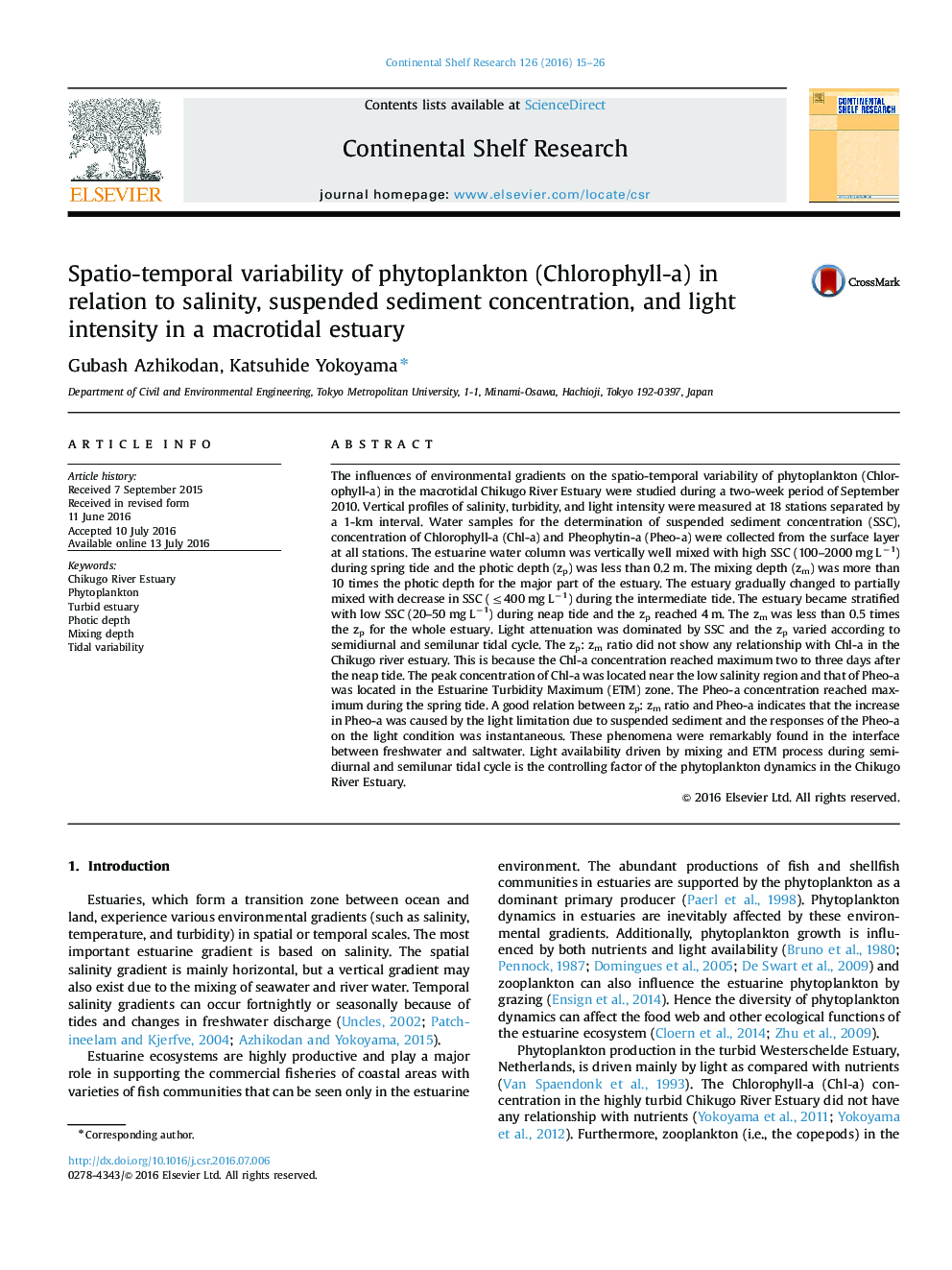| کد مقاله | کد نشریه | سال انتشار | مقاله انگلیسی | نسخه تمام متن |
|---|---|---|---|---|
| 4531518 | 1626087 | 2016 | 12 صفحه PDF | دانلود رایگان |

• Importance of spring-neap tidal cycle to the primary production in a turbid estuary.
• Peak concentration of Chl-a was located near the low salinity region.
• Peak concentration of Pheo-a was located in the ETM zone.
• Chl-a concentration reached maximum two to three days after neap tide.
• Pheo-a variation was dominated light limitation due to mixing and SSC.
The influences of environmental gradients on the spatio-temporal variability of phytoplankton (Chlorophyll-a) in the macrotidal Chikugo River Estuary were studied during a two-week period of September 2010. Vertical profiles of salinity, turbidity, and light intensity were measured at 18 stations separated by a 1-km interval. Water samples for the determination of suspended sediment concentration (SSC), concentration of Chlorophyll-a (Chl-a) and Pheophytin-a (Pheo-a) were collected from the surface layer at all stations. The estuarine water column was vertically well mixed with high SSC (100–2000 mg L−1) during spring tide and the photic depth (zp) was less than 0.2 m. The mixing depth (zm) was more than 10 times the photic depth for the major part of the estuary. The estuary gradually changed to partially mixed with decrease in SSC (≤400 mg L−1) during the intermediate tide. The estuary became stratified with low SSC (20–50 mg L−1) during neap tide and the zp reached 4 m. The zm was less than 0.5 times the zp for the whole estuary. Light attenuation was dominated by SSC and the zp varied according to semidiurnal and semilunar tidal cycle. The zp: zm ratio did not show any relationship with Chl-a in the Chikugo river estuary. This is because the Chl-a concentration reached maximum two to three days after the neap tide. The peak concentration of Chl-a was located near the low salinity region and that of Pheo-a was located in the Estuarine Turbidity Maximum (ETM) zone. The Pheo-a concentration reached maximum during the spring tide. A good relation between zp: zm ratio and Pheo-a indicates that the increase in Pheo-a was caused by the light limitation due to suspended sediment and the responses of the Pheo-a on the light condition was instantaneous. These phenomena were remarkably found in the interface between freshwater and saltwater. Light availability driven by mixing and ETM process during semidiurnal and semilunar tidal cycle is the controlling factor of the phytoplankton dynamics in the Chikugo River Estuary.
Journal: Continental Shelf Research - Volume 126, 1 September 2016, Pages 15–26